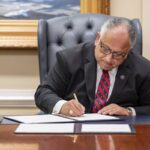A recovery in Chinese consumer demand needs time to pick up due to the “scarring effect” of COVID-19, but there is no basis for any long-term deflation, an official from the People’s Bank of China (PBOC) said on Thursday.
While the world’s second-largest economy reported better-than-expected growth in the first quarter, some economists said the upbeat headline figures mask underlying weakness in both household and external demand.
Despite record first-quarter bank lending, consumer price inflation is slowing sharply and factory gate prices are in freefall, creating a headache for the central bank.
Falling inflation suggests the supply of consumer goods, due to government policies that have focused on production, has outpaced demand, Zou Lan, head of the monetary policy department at PBOC, told a news conference in Beijing.
China has not seen deflation, which features falls in prices and money supply, which are often accompanied by economic recession, Zou said.
“With the strong support of a package of policies to stabilise the economy, a recovery in domestic production has continued to accelerate,” Zou said.
“On the other hand, demand recovery has been slower. The scarring effect of the epidemic has yet to recede, and it will take time for consumption willingness, especially consumption demand for bulk items, to recover.”
Consumer price inflation is likely to pick up later this year as there is lagging impact between bank lending and economic activity, Zou said, adding that there is no basis for sustained deflation or increases in inflation in China.
“Consumer demand is expected to further warm up, price rises in the second half are likely to gradually return to the average level of previous years,” he said, predicting a U-shaped trend in inflation this year.
He added that the central bank will pay attention to possible imported inflation.
The central bank will make its policy “precise and forceful”, better using its policy tools to channel more credit to small firms, tech innovation and other key sectors, Zou said.
RATE RISKS
The central bank has paid more attention to interest rate risks since the collapse of Silicon Valley Bank (SVB), Zuo said.
“At the end of last year, our country’s asset management market experienced fluctuations, which also warned us to attach great importance to interest rate risks,” he said without elaborating.
The central bank’s structural policy tools totalled about 6.8 trillion yuan ($988.37 billion) at the end of the first quarter, he added.
Since 2020, the central bank has expanded its arsenal of tools, including relending and rediscount facilities and other low-cost loans.
Ruan Jianhong, spokesperson of the PBOC, expected household loan demand to steadily increase.
New household loans, mainly mortgages and consumer loans, accounted for 16% of total new loans in the first quarter, despite a jump in mortgages in March, while corporate loans made up for the rest, central bank data showed.
China’s macro leverage ratio, which measures the economy’s overall indebtedness, was at 289.6% in the first quarter, up 8 percentage points from the end of 2022, Ruan said.
($1 = 6.8800 Chinese yuan renminbi)
Source: Reuters
















